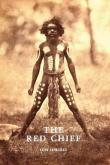AustLit
The material on this page is available to AustLit subscribers. If you are a subscriber or are from a subscribing organisation, please log in to gain full access. To explore options for subscribing to this unique teaching, research, and publishing resource for Australian culture and storytelling, please contact us or find out more.
Latest Issues
AbstractHistoryArchive Description
Young warrior Red Kangaroo, by his mental and physical prowess, becomes a chief of his tribe - the revered and powerful Red Chief of the Gunnedah district. His story is handed down from generation to generation by its hero's tribe and given by the last survivor, Bungaree, to the white settlers of the district.
Notes
-
Some editions have short title.
Contents
* Contents derived from the
Sydney,
New South Wales,:Angus and Robertson
, 1953 version. Please note that other versions/publications may contain different contents. See the Publication Details.
- The Last of His Tribei"He crouches, and buries his face on his knees,", single work poetry (p. v)
Publication Details of Only Known VersionEarliest 2 Known Versions of
Other Formats
- Sound recording.
- Braille.
- Large print.
Works about this Work
-
Cumbo the Red Chief
2013
single work
review
— Appears in: Tracker , June vol. 3 no. 2013; (p. 68) -
Finding Fault : Aborigines, Anthropologists, Popular Writers and Walkabout.
2010
single work
criticism
— Appears in: Australian Cultural History , vol. 28 no. 2/3 2010; (p. 179-200) 'The popular middlebrow magazine Walkabout was published between 1934 and 1974. Its principle aim was to promote travel to and within Australia and to educate Australians about their continent. It aspired to be an Australian geographic magazine, and to this end it focussed on inland and remote Australia, and natural history. For this reason, and because it was published throughout a period, particularly in the early decades, when only those Aborigines living afar from populated regions were recognised as Aborigines, many of Walkabout's articles were about Aborigines or, more commonly, made mention of them. There are very few critiques of Walkabout, but those that do exist are critical of its portrayal of Aborigines. Notwithstanding that there are many reasons to find fault, it is possible to read this material in a more salutary light, even against the apparent intention of at least one of the contributors, Ernestine Hill. This article considers the work of a number of popular writers and two of the anthropologists who contributed to Walkabout, and finds reason to be less critical and more cautious in our assessment of their narrative representation of Aborigines than is generally allowed. The period of analysis is from 1934 to 1950.' (Editor's abstract)
-
Untitled
1953
single work
review
— Appears in: The Bulletin , 23 December vol. 74 no. 3854 1953; (p. 2)
— Review of The Red Chief : As Told by the Last of his Tribe 1953 single work autobiography
-
Untitled
1953
single work
review
— Appears in: The Bulletin , 23 December vol. 74 no. 3854 1953; (p. 2)
— Review of The Red Chief : As Told by the Last of his Tribe 1953 single work autobiography -
Finding Fault : Aborigines, Anthropologists, Popular Writers and Walkabout.
2010
single work
criticism
— Appears in: Australian Cultural History , vol. 28 no. 2/3 2010; (p. 179-200) 'The popular middlebrow magazine Walkabout was published between 1934 and 1974. Its principle aim was to promote travel to and within Australia and to educate Australians about their continent. It aspired to be an Australian geographic magazine, and to this end it focussed on inland and remote Australia, and natural history. For this reason, and because it was published throughout a period, particularly in the early decades, when only those Aborigines living afar from populated regions were recognised as Aborigines, many of Walkabout's articles were about Aborigines or, more commonly, made mention of them. There are very few critiques of Walkabout, but those that do exist are critical of its portrayal of Aborigines. Notwithstanding that there are many reasons to find fault, it is possible to read this material in a more salutary light, even against the apparent intention of at least one of the contributors, Ernestine Hill. This article considers the work of a number of popular writers and two of the anthropologists who contributed to Walkabout, and finds reason to be less critical and more cautious in our assessment of their narrative representation of Aborigines than is generally allowed. The period of analysis is from 1934 to 1950.' (Editor's abstract)
-
Cumbo the Red Chief
2013
single work
review
— Appears in: Tracker , June vol. 3 no. 2013; (p. 68)
Last amended 14 May 2020 07:31:41
Subjects:
- Country towns,
- Gunnedah, Gunnedah area, Central West NSW, New South Wales,
Settings:
- 1700-1799
- 1800-1899
Export this record






